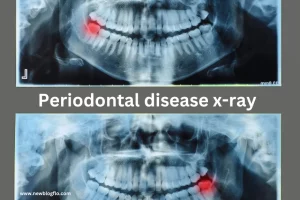In a world where mental health is increasingly recognized and discussed, there is still a veil over a particular aspect of anxiety disorders – silent panic attacks. While panic disorder is often associated with intense physical and emotional symptoms, such as shortness of breath, trembling, and a racing heart.
Silent panic attacks manifest themselves differently, often going unnoticed by others. These hidden episodes of terror are just as debilitating and distressing, but they occur without the outward signs that most people associate with panic.
Silent panic attacks can leave individuals feeling isolated and misunderstood, as they battle their inner demons in silence. Unlike their more pronounced counterparts, these episodes can unfold with subtle yet overwhelming symptoms, causing an internal chaos that is difficult to express.
The heart rate may accelerate, palms may become sweaty, and an unshakable sense of dread can engulf the sufferer, but onlookers remain oblivious. As a result, it may be difficult for persons who are impacted to ask for assistance because they worry about being judged or branded as attention-seekers.
By bringing awareness to this not well-known sign of panic disorder, we aspire to foster a community that is more compassionate and accepting of those affected. Together, we can foster an environment where the struggles of those experiencing silent panic attacks are acknowledged and support is readily available.
Deciphering Unnoticeable Panic Episodes
Definition and Symptoms of Silent Panic Attacks

Silent panic attacks refer to those anxiety episodes experienced by individuals diagnosed with panic or anxiety disorders without displaying any specific visible symptoms. They can occur anywhere at any time—at home, at work, in public places—often going unnoticed by people around the sufferer.
Recognizing silent panic attacks can be challenging, considering their less visible nature, but being aware of the following symptoms is crucial:
- Feeling Dizzy or Tingling in the limbs: During a silent panic attack, there’s often a decrease in blood flow to the extremities, making people feel as if their arms, legs, hands, or feet are weak. They might also experience tingling sensations or numbness in these areas, as if they were in one position for too long.
- Derealization or depersonalization: Derealization refers to a feeling of being disconnected from the world around you, with surroundings appearing distorted. Depersonalization, on the other hand, is characterized by feeling detached from one’s body. Both of these sensations are common among individuals experiencing silent panic attacks.
- Increase in Heart Rate: A faster-than-normal heart rate or the perception of the heart skipping a beat could also be signs of a silent panic attack.
- Intrusive Thoughts: Intrusive thoughts are another key sign. They occupy your mind to the extent that they interfere with focusing on life or experiencing joy from activities. Even though intrusive thoughts can be experienced without a panic attack, they are often a symptom of one.
- Nausea: There’s a bilateral link between anxiety disorders and irritable bowel syndrome (IBS), which is why individuals experiencing a silent panic attack may have a stomachache or other gastrointestinal upset.
- Headaches: Silent panic attack symptoms can peak within minutes, and one of the leading indicators is a headache.
Please note that these symptoms don’t necessarily assure that one is facing a silent panic attack; it’s recommended to seek professional help for an accurate diagnosis if one or more symptoms persist.





